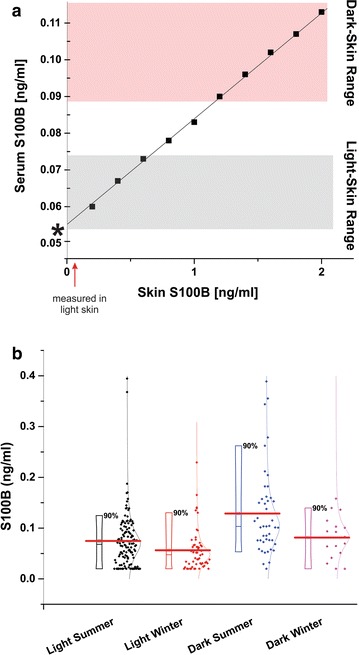Fig. 4.

Predicted differences in serum S100B levels as a result of skin pigmentation. a When the initial parameters shown in Fig. 2 (insert) were used, these parameters predicted a serum S100B level of 0.065 ng/ml for light-skinned subjects, which is comparable to previously recorded findings within this subpopulation (asterisk near axis). Note that we used realistic level for skin S100B, which was taken from our previous study and the data in Fig. 2. In order to output accurate serum S100B levels for dark-skinned subjects, the model required that we increase skin concentration of S100B to above 2.0 ng/ml, which resulted in a serum concentration of 0.115 ng/ml. This implies that any change in a subject’s skin pigmentation (e.g., tanning) will increase levels of S100B. This was experimentally confirmed in b showing the results of a comparative analysis on the effects of exposure to sun. Note the significant increase in S100B after sun exposure regardless of whether dark skinned (Latinos, African–American subjects) or light skinned individuals were studied
